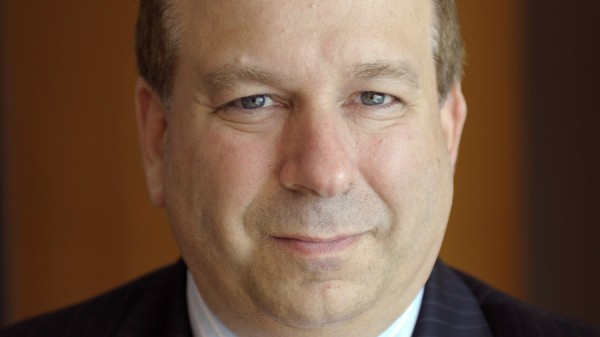by Clas G. Olsson, Senior Portfolio Manager, CIO, International Growth Equity, Invesco
As we look ahead to 2018, it’s important to first recognize how significant 2017 has been for international markets. This is the eighth year of a global bull market, but prior to 2017, international markets had trailed the US for four consecutive years — and for six of the last seven years.1
2017 has been the first year since 2010 of global synchronized earnings growth, and expectations are for this to continue in 2018. We’ve also seen a broad-based acceleration in global gross domestic product (GDP) growth, with stronger growth in the US, European Union, Japan, Asia and Latin America. In fact, for the first time since 2007,the Organization for Economic Cooperation and Development expects all 46 economies that it tracks to see growth in 2017.2
The Invesco International and Global Growth team is pleased to see this global recovery in earnings and economic growth, but what’s most important to us are the Earnings, Quality and Valuation (EQV) characteristics of individual companies. That’s how we assess opportunities for our investors, and that’s how we think about the landscape for 2018.
An EQV perspective on the global market landscape
Earnings. Earnings revisions are improving, and growth is accelerating on a global basis — a significant change from the previous five to six years, when earnings growth outside of the US had been anemic at best. Projections are that this improvement will continue in 2018; current expectations are for 15% global earnings per share (EPS) growth, with international earnings growing faster than earnings in the US, and the strongest growth coming from emerging markets.3
Unlike most previous years, we have seen growth expectations increase rather than being slashed as we move later into the year. The strongest earnings revisions are coming from the emerging markets, Japan and Asia ex-Japan, while Europe has started to experience some small negative revisions primarily driven by the stronger euro.
Quality. While the US has seen strong profit growth and margin expansion since the last recession, profits in non-US markets have been weak, especially in Europe, emerging markets and Asia ex-Japan. US aggregate profit levels are now more than 30% above their previous peak in 2007, while profits for international (i.e., non-US) markets are still around 30% below their previous peak.1 We believe this indicates potential for further profit expansion for international markets, thus providing better support considering what looks to be full valuations.
Valuations. Valuations haven’t mattered much to investors in 2017, as they were willing to tolerate very high valuations for defensive growth stocks and for momentum growth names that had been bid up due to strong upgrades (or anticipation of upgrades). But valuations are always important to us. The US market looks the most extended of all the major stock markets, with cyclically adjusted price-to-earnings (P/E) ratios (or Shiller P/E) only having been at higher levels in the late 1920s and in 2000. The valuation premiums for the US market versus international markets are close to multi-decade highs, with the US trading at a 26% P/E premium on forward earnings, and an 80% price-to-book (P/B) premium. Dividend yields are close to 50% higher in international markets than in the US.1
While valuations are more attractive outside the US, most areas have re-rated in 2017, and few areas of the global markets can be considered cheap at this point. The higher valuation levels have made it more difficult to find attractive new ideas and to deploy cash.
What risks are we watching?
Despite a very positive 2017 rebound for global equities and a strong basis for success in 2018, a number of risks remain. These include:
- Further uncertainties over Brexit negotiations following the recent UK snap election in which no party won an overall majority.
- The longer-term implications of US President Donald Trump’s administration.
- A volatile situation in North Korea.
- Elevated debt levels in some emerging market economies.
- Potential market volatility that may arise when central banks begin to pull back from ultra-low interest rates and quantitative easing programs.
Key takeaways
Not only has 2017 been significant for global markets, it was significant for Invesco International Growth Fund as well; we marked our 25th anniversary in April. And when we look back over time we see that performance of international markets versus the US tends to go in cycles. In recent years, the US market has experienced a long cycle of outperformance, but we believe that the pendulum may be ready to start swinging back. We see a number of reasons to be cautiously optimistic on international markets, especially relative to the US market.
Furthermore, we believe our investment approach is one that is poised to come back into favor once investors return to a focus on fundamentals such as valuations, strength of balance sheet and quality of business model.
Read more blogs from the Invesco International and Global Growth team.
Learn more about Invesco International Growth Fund.
1 Source: Invesco. International markets represented by the MSCI All Country World ex-US Index, and US markets represented by the S&P 500 Index. An investment cannot be made in an index.
2 Source: BCA
3 Source: Citi
*****
Important information
Blog header image: sodafish/Shutterstock.com
Past performance cannot guarantee future results.
Price-to-book (P/B) ratio is calculated by dividing the market price of a stock by the book value per share.
The Shiller price-earnings (P/E) ratio, also known as the cyclically adjusted P/E ratio, is a valuation measure calculated using real per-share earnings over a 10-year period.
The MSCI All Country World ex-US Index is an unmanaged index considered representative of large- and mid-cap stocks across developed and emerging markets, excluding the US.
The S&P 500® Index is an unmanaged index considered representative of the US stock market.
The risks of investing in securities of foreign issuers, including emerging market issuers, can include fluctuations in foreign currencies, political and economic instability, and foreign taxation issues.
Clas G. Olsson
Senior Portfolio Manager, Managing Director
CIO, International Growth EquityClas Olsson is Chief Investment Officer (CIO) and Senior Portfolio Manager with the Invesco International and Global Growth team. He also serves as a lead manager on the Invesco International Growth and Invesco European Growth strategies.
Mr. Olsson began his investment management career in 1994 as an investment officer and portfolio analyst specializing in international equities with Invesco. He was promoted to portfolio manager in 1997 and assumed his current role as senior portfolio manager in 1999 and CIO in 2009. Prior to joining Invesco, Mr. Olsson was a communications officer in the Royal Swedish Navy.
A native of Vasteras, Sweden, Mr. Olsson became a commissioned naval officer at the Royal Swedish Naval Academy in 1988 and earned a BBA degree in 1994 from The University of Texas at Austin.














